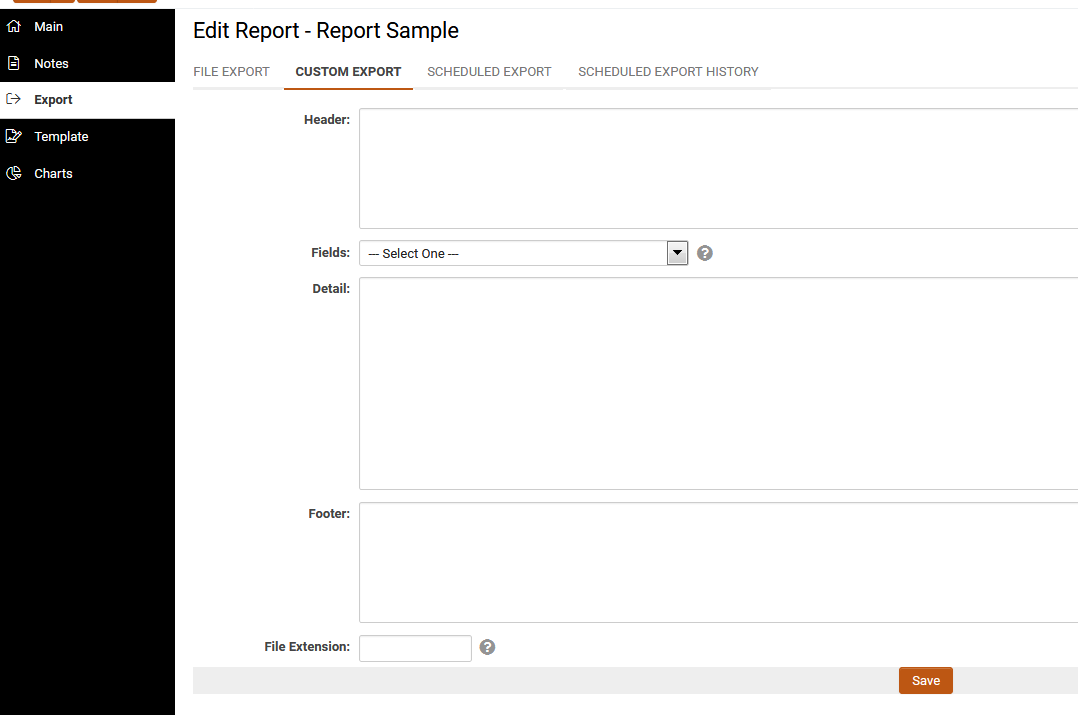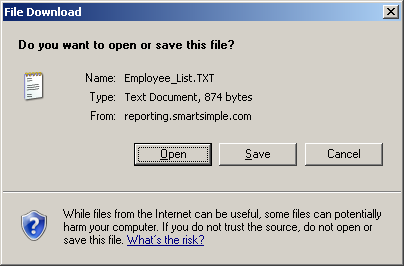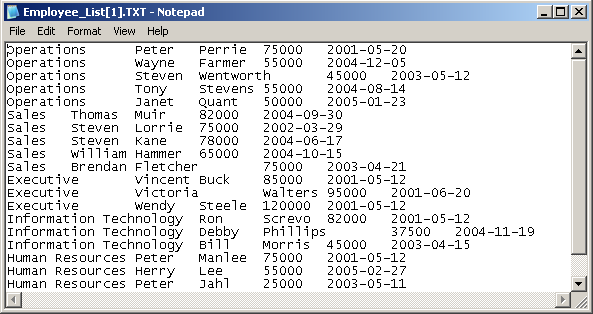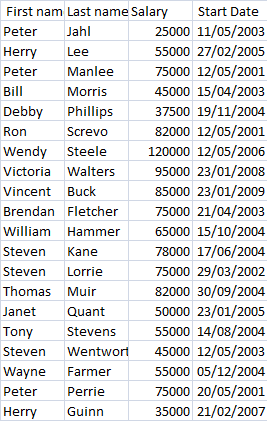Exporting Reports
There are two techniques to access report data from other applications.
- If you want to access reports from Microsoft Excel or Microsoft Word, then you can use the SmartSimple Plug-Ins for Microsoft Office for these applications to access report data.
- If you want to export the report data to any other data format (for example comma separated values), then you can use the Export settings for the report to create the file format required.
- You can also use this technique to create a MS-Excel or MS-Word file, without the need to use the Plug-In application.
Using these techniques, it is possible to support applications as diverse as accounting (invoice transactions), payroll (timesheet transaction), or statistical work (web form transactions).
Procedure
1. Click the Advanced Report Setting tab.
The Advanced Report Settings window is displayed.
This window consists of the following settings:
- Header - Static or variables that you need to display at the top of the export file.
- Fields - A list of fields taken from the report that is being used to create the report. In addition, you can select two special settings – {tab} – used to add a tab character to the specification and {break} – used to add a line feed to the specification.
- Detail - You construct the actual record layout for the specification in this area. This section can consist of multiple lines.
- Footer - Static or variables that you need to display at the bottom of the export file.
- File Extension - The extension that you wish to associate with the export specifications. By setting this value to any valid Windows file extension, the appropriate application will be launched when the data is exported.
2. Add the following fields and special characters to the Detail section:
Each field will be delimited by a tab character ({TAB}), and a line feed ({BREAK}) will be added to the end of each exported record.
File Extension
By setting the file extension, you define which program on your computer should be used to process the exported report data. Some common extensions that are useful for exporting date are:
- TXT – Window Notepad.
- XLS – Microsoft Excel.
- IIF – QuickBooks.
1. Set the Extension to TXT.
The extension TXT is generally associated with Notepad.
2. Click the Save button.
3. Click the Edit Report button.
4. Click the Reports tab.
The report list is displayed and the Employee list report is now displayed with an Export button.
5. Click the Export button.
Depending on your Browser and Security setting, you may need to answer some prompts before the file can be opened.
6. If required, click the Open button.
The file is opened in the associated application – Notepad.
The file name is set to the report name plus the extension specified.
7. Close the Notepad application.
Export to Excel
If you change the extension to XLS, then the file will be displayed using MS-Excel.
1. Click the Reports tab.
2. Click the Edit button for the Employee List report.
3. Click the Advanced Report Settings tab.
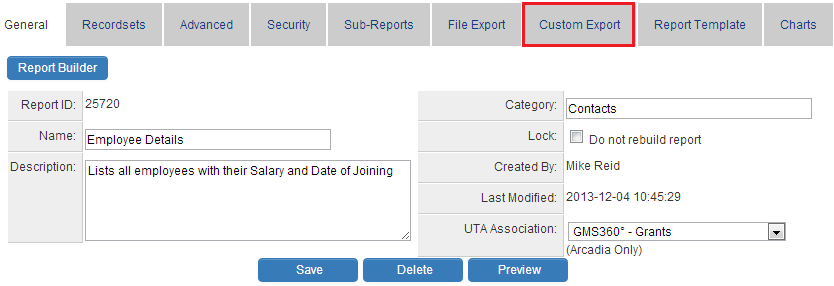
You can specify the layout of the report to be exported in the next screen
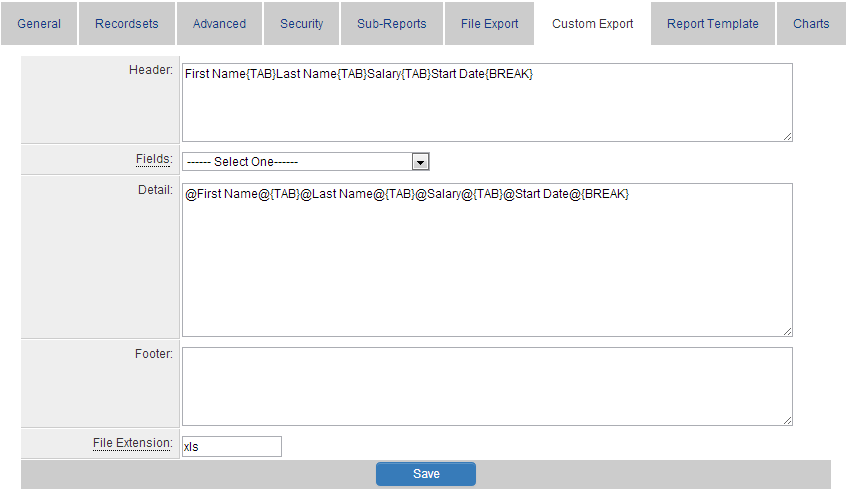
Header section : you specify the column headings for your report to be exported.
Fields : drop down gives a list of variables that correspond to the fields selected in the report through report builder.
Details section : you specify the fields for the report to be exported. The fields that you select will be displayed right to left in exported report so select the field for the last column first.
4. Change the Extension to XLS or CSV.
5. Save the Layout.
6. Return to the Report list and click the Export button.
The File is opened in MS-Excel.
7. Close Excel.
Note: If the report has sub reports attached then you must set up the Advanced export settings for each of the sub report attached.
Exporting with Subreports
Example
- The following would export a report and subreport is Comma Separated Values format (CSV):
- @Companies/Accounts - Company name@,
- @Companies/Accounts - Address 1@,
- @Companies/Accounts - City@,
- @Companies/Accounts - State@,
- @Companies/Accounts - Company ID@,
- @subreport_0@
{BREAK}
